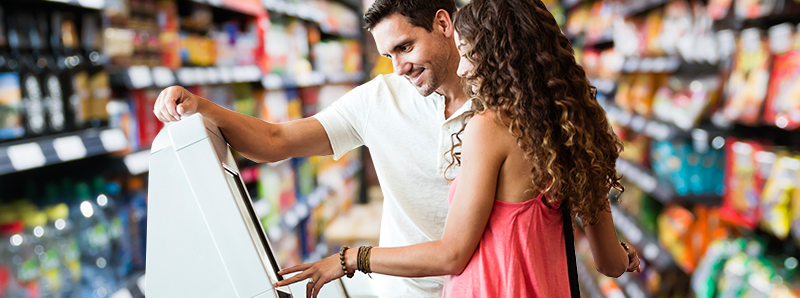
There is no question that retail is huge around the world, but do shoppers like and dislike the same things everywhere? Not just goods and services, but their preferences along the shopping journey — big chain-box vs. neighbourhood store, self-checkout vs. cashiers, online vs. brick & mortar or a combination of the two.
A few months ago, in the lead up to NRF 2018, SOTI reported the results of a research study we conducted in the US. We surveyed shoppers about their attitudes towards technology in their shopping experience. For a technology company that sells into retail, the research results were extremely encouraging.
Self-service and mobile tech lead the way
There was some great data, and it generated a lot of interest alongside NRF. However, SOTI wanted to know how these results tracked outside of North America. So, in the run-up to RBTE 2018, we extended our survey to shoppers in the UK. We were keen to find out whether the attitudes of shoppers in the US and the UK differed regarding technology in their shopping experience. The answer is, there is very little difference. Across the entire survey, the numbers from the US and UK were within a couple of percentage points of each other. For example.
- Over 66% of US shoppers (67% in the UK) believe that retailers that utilize more technology enable a faster shopping experience.
- Around 76% of US shoppers (79% in the UK) are comfortable or very comfortable in retail settings where ONLY self-checkout technology is offered.
- 61% of US shoppers (66% in the UK) are comfortable or very comfortable with the idea of new shipping methods offered by retailers (drones, autonomous vehicles, in-home delivery).
Why UK and US Shoppers are Different
At first glance, shoppers in the US and UK appear to have the same attitudes towards technology when they shop. Most of the survey respondents want more in-store technology such as mobile POS, kiosks and digital signage because it makes shopping faster and easier. But what were the key differences between shoppers in the US and the UK, and what (if anything) can we conclude from them?
The survey responses with the largest discrepancy were:
- More than 75% of US respondents (59% in the UK) think that sales associates equipped with technology (aka Connected Associates) improve their shopping experience.
- Over 66% of the US respondents (51% in the UK) prefer a store that integrates technology into the shopping experience.
It is not clear whether these differences are significant, and if they are, are their origins cultural or just a function of familiarity. I will leave these difficult questions to the economists and psychologists, but the bottom line from SOTI’s perspective is shoppers are welcoming in-store innovation on both sides of the Atlantic.
This trend is consistent with how retailers are spending more money on technology and automation to combat rising labour costs and improve the customer experience. For SOTI, more technology — more smartphones, tablets, kiosks, mPOS and digital signage, means more things for retailers to secure and manage. This is good news.
For a more detailed look at SOTI’s research results, and an in-depth analysis of the impact of technology on the retail industry, please download and read our ebook – Technology Spurs Shopper-centric Retail.



